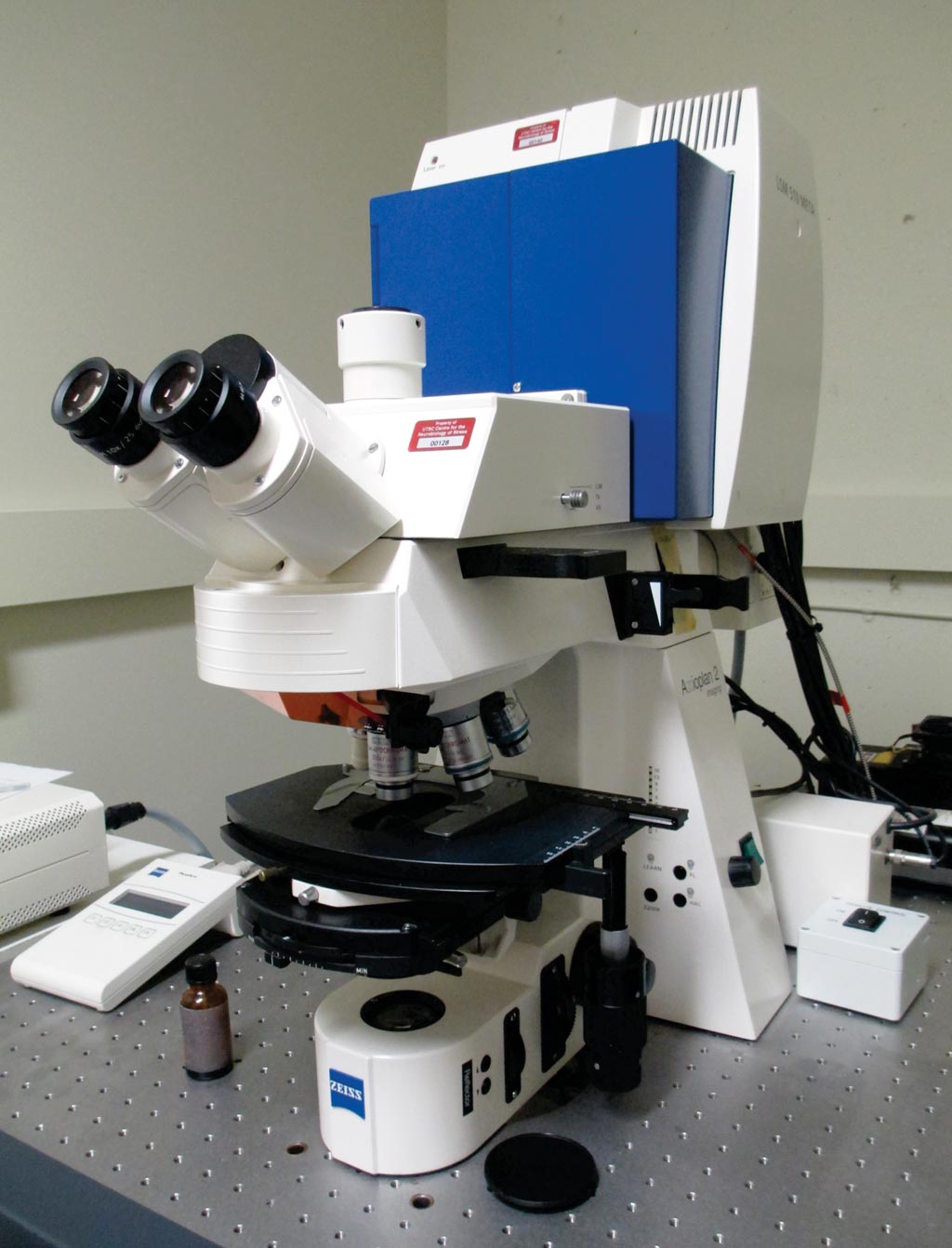Technology Developed for Prostate Cancer Diagnosis and Monitoring
By LabMedica International staff writers
Posted on 06 Apr 2017
Early diagnosis of prostate cancer and evaluation of appropriate treatment options requires development of effective and high-throughput selective capture technology for exosomes that are positive for the expression of enzyme-biomarker, prostate-specific membrane antigen (PSMA).Posted on 06 Apr 2017
Technology under development will provide a non-invasive approach for diagnosing prostate cancer and tracking the disease's progression and it could enable doctors to determine how cancer patients are responding to different treatments without needing to perform invasive biopsies.

Image: The LSM510 META confocal microscope (Photo courtesy of Zeiss).
Bioengineers at Washington State University fitted a mat of tiny glass springs with specially designed biomarkers that attract the fatty droplets of proteins and RNA that tumor cells shed into body fluids. The droplets, called exosomes, contain genetic information that can be analyzed to determine a cancer's molecular composition, even how far it has advanced. Exosomes are small secreted vesicles that play a key role in intercellular communication and cancer progression.
PSMA is highly enriched in exosomes excreted by PSMA positive prostate cancer cells. Using PSMA positive cells from the well-established prostate cancer cell line (LNCaP), the secreted exosomes were collected and isolated from the culture medium. The tumor-derived exosomes were selectively captured using a novel silica nanostructure support that had been functionalized with the small molecule ligand TG97, a known inhibitor of PSMA enzymatic activity that binds irreversibly in the active site of PSMA. All samples were incubated at room temperature for 20 minutes, followed by analysis using flow cytometry with a FACS Calibur flow cytometer. The samples were imaged using a 25× 9 water immersion objective with a 510 META confocal microscope.
M. Grant Norton, a professor of mechanical and materials engineering and senior author of the study said, “Say you have a urine sample from a patient known to have prostate cancer. You could pass the urine through the device we are in the process of putting together and measure the number of exosomes that are specifically from prostate cancer cells. The physician would propose a treatment plan and the amount of exosomes in a follow-up urine sample would indicate how effective the treatment was.” The study was published online on February 16, 2017, in the Journal of Materials Science.













